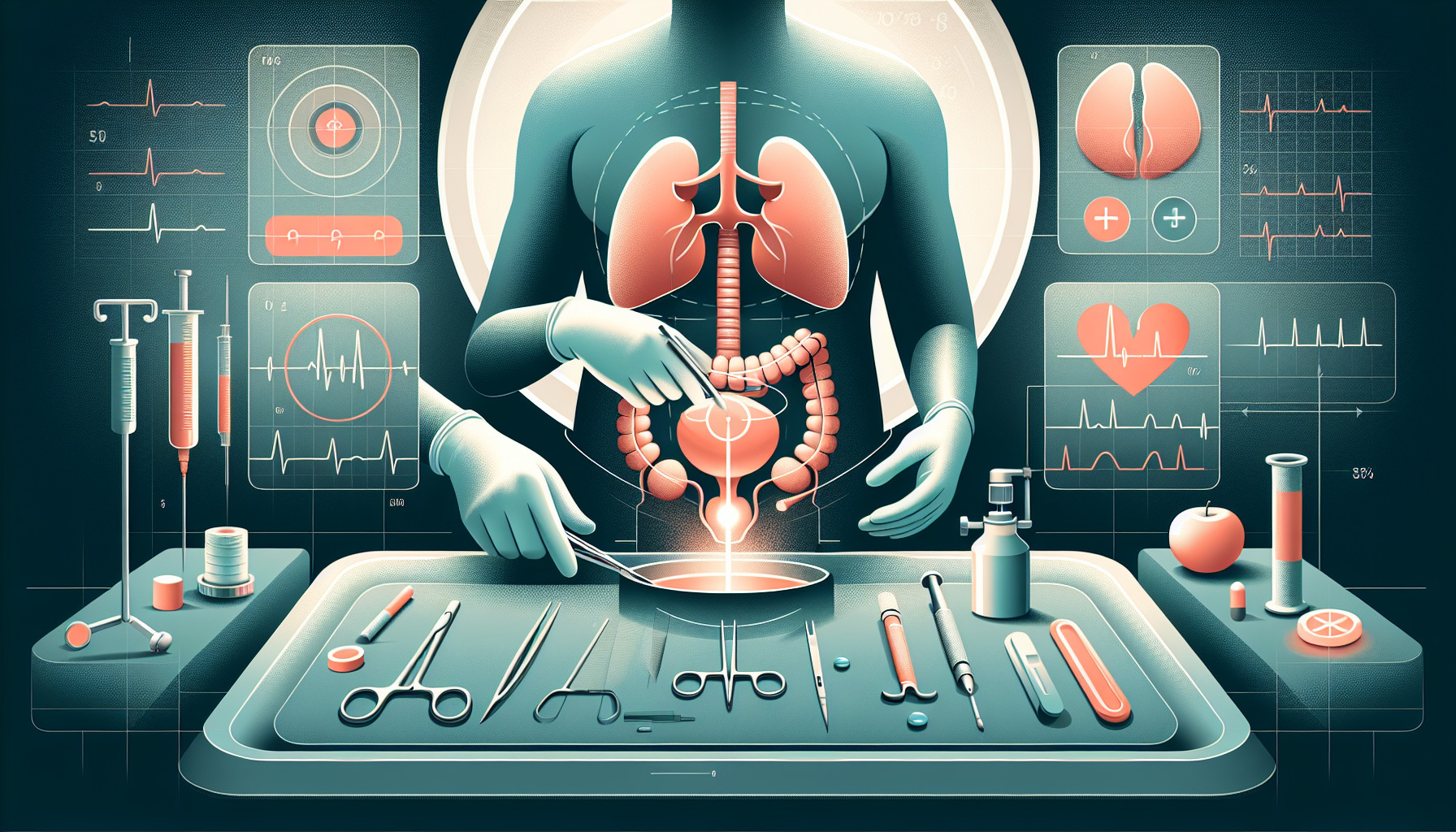Our Summary
This study investigated the rate of inguinal hernia (a type of hernia in the groin area) after prostate cancer surgery. It compared the rates after different types of surgery - traditional open surgery, laparoscopic surgery (a less invasive method using small incisions), and robot-assisted laparoscopic surgery. The researchers reviewed existing articles and studies on the topic.
The results showed that the rate of inguinal hernia was highest after traditional open surgery (about 14 out of 100 patients), followed by laparoscopic and robot-assisted surgeries (about 7-8 out of 100 patients). When compared to patients who didn’t have any treatment, those who had open surgery had a significantly higher rate of hernia. Some evidence also suggested a higher rate for those who had laparoscopic and robot-assisted surgeries.
Most of the hernias that developed after prostate surgery were indirect (a type of hernia where the intestine pushes through a weak spot in the abdominal wall).
The study also found that some techniques used during surgery to prevent hernia showed promising results in reducing the rate of hernia after surgery.
FAQs
- What is the rate of inguinal hernia after different types of prostate cancer surgery according to the study?
- Were there any preventive techniques used during surgery that showed promise in reducing hernia rates?
- What type of hernia usually developed after prostate surgery?
Doctor’s Tip
Therefore, it is important for patients undergoing prostatectomy to discuss the risk of inguinal hernia with their doctor and inquire about surgical techniques that can help reduce this risk. Additionally, patients should follow their doctor’s post-operative instructions carefully to minimize the chances of developing a hernia. Regular follow-up appointments with a healthcare provider are also important to monitor for any signs or symptoms of hernia development.
Suitable For
Patients who are typically recommended prostatectomy include those with localized prostate cancer (cancer that is confined to the prostate gland) and who have a life expectancy of at least 10 years. Other factors that may influence the recommendation for prostatectomy include the aggressiveness of the cancer, the patient’s overall health and age, and the patient’s preference for treatment options.
Patients who have advanced prostate cancer that has spread beyond the prostate gland may not be recommended for prostatectomy, as the goal of treatment in these cases is usually focused on managing the cancer and improving quality of life rather than curing the cancer.
Overall, the decision to recommend prostatectomy is based on a combination of factors including the stage and aggressiveness of the cancer, the patient’s overall health and life expectancy, and the patient’s preferences and goals for treatment. It is important for patients to discuss their individual case with their healthcare team to determine the most appropriate treatment plan for their specific situation.
Timeline
Before prostatectomy:
- Patient undergoes various tests and consultations to determine if surgery is necessary
- Patient may undergo pre-operative preparation and counseling
- Patient is briefed on the risks and potential complications of the surgery
After prostatectomy:
- Patient may experience pain, discomfort, and swelling in the surgical area
- Patient may require catheterization for a period of time
- Patient may need to follow a specific diet or take medications to aid in recovery
- Patient may need to attend follow-up appointments to monitor progress and address any issues
- Patient may need to participate in physical therapy or other rehabilitation programs to regain strength and function
Overall, the timeline before and after prostatectomy can vary depending on the individual patient’s condition and the specific type of surgery performed. It is important for patients to closely follow their healthcare team’s instructions and advice to ensure a successful recovery.
What to Ask Your Doctor
Some questions a patient should ask their doctor about prostatectomy include:
- What is the risk of developing an inguinal hernia after prostate surgery?
- What are the differences in the rates of hernia between traditional open surgery, laparoscopic surgery, and robot-assisted laparoscopic surgery?
- What are the symptoms of an inguinal hernia and how is it diagnosed?
- Are there any preventive measures or techniques that can be used during surgery to reduce the risk of hernia?
- How is an inguinal hernia treated if it develops after prostate surgery?
- What is the recovery process like for a patient who develops a hernia after surgery?
- Are there any long-term complications associated with inguinal hernia after prostatectomy?
- How often should I follow up with my doctor to monitor for any signs of hernia development?
- Are there any lifestyle changes or precautions I should take to reduce my risk of developing a hernia after surgery?
- Are there any specific exercises or physical therapy that can help strengthen the abdominal muscles and reduce the risk of hernia?
Reference
Authors: Alder R, Zetner D, Rosenberg J. Journal: J Urol. 2020 Feb;203(2):265-274. doi: 10.1097/JU.0000000000000313. Epub 2019 Apr 30. PMID: 31039101
